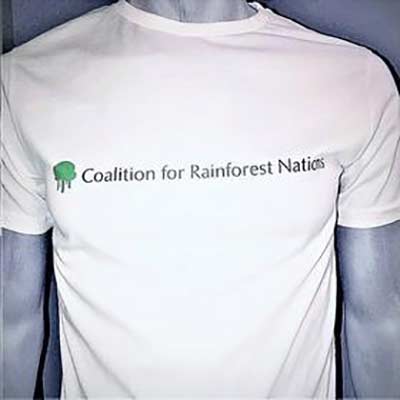
A Conversation with Eloise Guidi, Greenhouse Gas Inventory and REDD+ Expert at CfRN
July 30, 2021, New York
Swiss-born, Eloise Guidi joined CfRN in 2017 and is a Greenhouse Gas Inventory and REDD+ expert. She works with CfRN’s technical team to help rainforest countries build their capacity for measuring, verifying, and reporting greenhouse gas emissions to United Nations Framework Convention on Climate Change (UNFCCC). In the last few years, she has worked closely with the Republic of Congo, Democratic Republic of Congo, Gabon, and Guyana, and has also provided support in Cameroon, Kenya, Uganda, Saint Lucia, and Dominica. In this interview, we asked Eloise five questions about the importance of her work:
Why is your work urgent?
Our work is key to the success of the Paris Agreement, which aims to keep global temperature rise to well below 2°C. As part of the agreement, countries must submit greenhouse gas inventories on a regular basis to track their progress in achieving their emission reductions goals. If we don’t know where countries stand in terms of their greenhouse gas emission levels, then they won’t be able to create targeted policies to curb the trends and comply with the agreement. The Coalition for Rainforest Nations (CfRN) makes sure that rainforest countries are aware of the latest guidelines, decisions, and methods for collecting the best data available to complete their greenhouse gas inventory.

What do you love about your job?
I wanted to play my part in fighting the climate emergency while learning about the world and its cultures. This job allows me to do both, and I learn new things all the time. I am not an authority on the Congo-Basin forests or the Gabonese agricultural system, but when I work with national experts, we’re able to exchange knowledge. They explain how their agriculture and forestry system works, and in return, I show them how best they can present this information so that they are compliant with the Paris Agreement. Since 2017, I have worked with some of the smartest people in the Caribbean and Africa within a wide range of government departments, indigenous communities, and other not-for-profit organizations and development agencies. All the people I work with in these countries are passionate about what they do and give everything they have to this effort.
Why did you want to work on preserving tropical rainforests rather than forests in Europe?
Every forest is important and provides unprecedented benefits to local communities and the world. Forests in Europe are well regulated and protected; in Switzerland, you must request permission to cut down a tree that is on your own property. But in many tropical countries, land planning is still in its infancy and sparks a lot of conflict. It is not uncommon to see a protected area that also has a mining concession or a logging concession on it. Only by monitoring forests will developing countries be able to understand forest cover loss and create better land planning systems.

What challenges do you face in your job?
Access to good data is the number one challenge. Government agencies or research groups may not have the right data because other agencies or ministries hold them. There is often a disconnect between agencies collecting the data and those that submit them to the UNFCCC. Also, there are instances where data are available but not in the right format or quantity for the reporting period. Finally, in many cases, the data are simply not yet available. Sometimes, countries may have one- or two-years’ worth of data, whereas we need a series of more years for Paris Agreement compliance. Collecting new information can take months, even years.
What would you say to a prospective donor who is thinking about supporting CfRN?
Many rainforest countries are committed to reaching their Paris Agreement goals, but unlike developed countries, they need support with technology and capacity building before they can make informed policy decisions. A major focus of CfRN’s work is improving the capacity of a country to collect, measure, and verify data. That’s what your generous contributions go towards. The first step is to understand where a country can best make carbon emission reductions. In the developed world, emissions come predominantly from industry, the power sector, buildings, and transport. In rainforest countries, emissions come from loss of forests. Land use change–when forests are cut down for timber or farmland–is the biggest emitter. By preparing accurate and complete greenhouse gas inventories, countries can determine which sector will have the most impact on their national carbon footprint and make better decisions surrounding their nationally determined contributions under the Paris Agreement.


